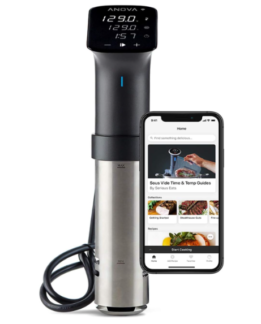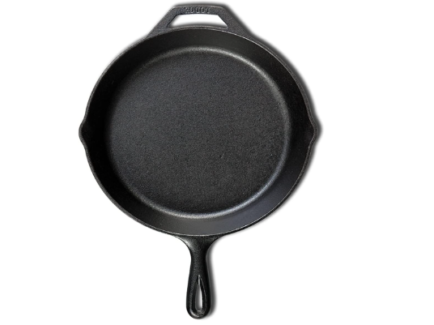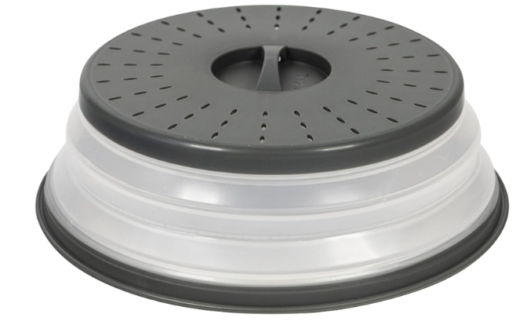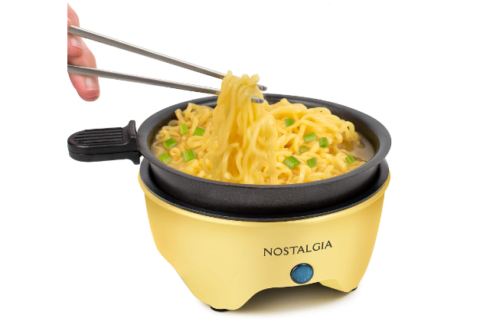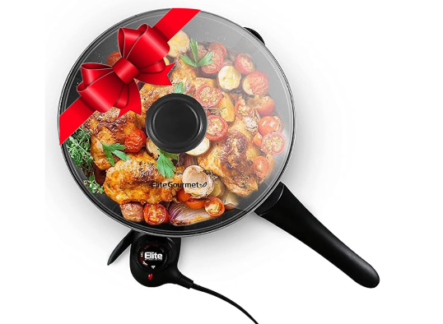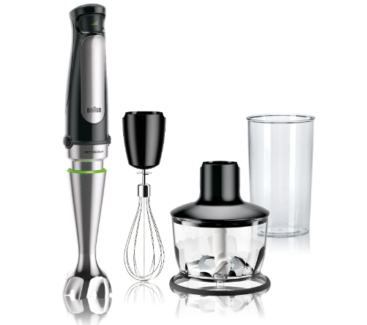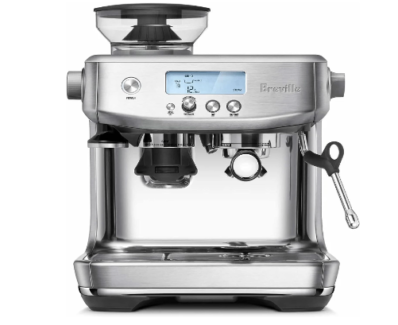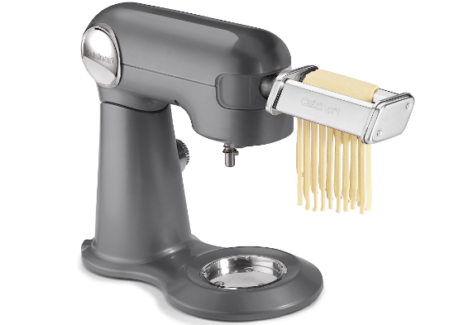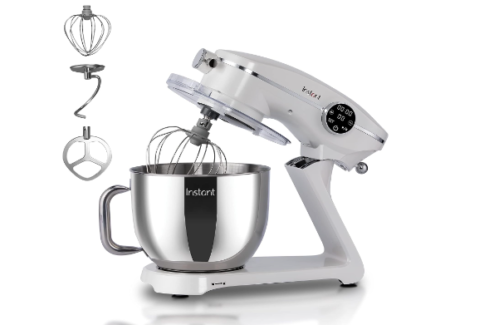Baking bread from scratch can be a rewarding experience, but...
Read More
A dough mixer for home is a kitchen appliance used to mix and knead dough for baking. These mixers are designed to make the process of mixing and kneading dough easier and less time-consuming, especially for those who frequently bake bread, pizza, and other baked goods.
Dough mixers for home come in a variety of sizes and styles, ranging from small hand mixers to larger stand mixers. They can be electric or manual, and some models also come with attachments for other food preparation tasks. Investing in a quality dough mixer can help home bakers achieve consistent and professional results in their baking.
Which dough mixer is best for home?
There are many different types of dough mixers available for home use, and the best one for you will depend on your specific needs and preferences. Here are a few options to consider:
- Stand Mixers: Stand mixers are a popular choice for home bakers, as they offer versatility and can handle a variety of tasks beyond just mixing dough. Look for one with a powerful motor and a large capacity bowl.
- Hand Mixers: If you’re short on counter space or only need a mixer for occasional use, a hand mixer might be a good option. They are typically less expensive than stand mixers and take up less storage space.
- Bread Machines: If you’re primarily interested in making bread, a bread machine may be the best option for you. They handle all aspects of the bread-making process, including kneading the dough, rising, and baking.
- Food Processors: Some food processors come with dough blade attachments, which can be useful for making dough. However, they may not be as effective as stand mixers or bread machines when it comes to kneading heavy dough.
Ultimately, the best dough mixer for you will depend on your individual needs and preferences. Consider factors such as price, capacity, versatility, and ease of use when making your decision.
What can I use instead of a dough mixer?
If you don’t have a dough mixer, there are still several ways to make dough by hand. Here are a few options:
- Mix the dough by hand: While it may take a bit more effort and time, mixing dough by hand is a viable option. Combine the ingredients in a large bowl and use your hands or a wooden spoon to mix until a dough forms. Once the dough is mixed, knead it on a floured surface until smooth and elastic.
- Use a food processor: If you have a food processor, you can use the dough blade attachment to mix and knead dough. Add the ingredients to the food processor and pulse until the dough comes together. Then, remove the dough from the food processor and knead it by hand.
- Use a stand mixer with a dough hook: If you have a stand mixer but don’t have a dough mixer attachment, you can use the dough hook attachment instead. Mix the ingredients in the bowl with the hook until the dough forms, then knead it by hand.
- Use a bread machine: A bread machine is designed to mix and knead dough, so it’s a great alternative to a dough mixer. Simply add the ingredients to the machine and let it do the work.
Overall, while a dough mixer can make the process of making dough easier, it’s certainly possible to make dough by hand or with other kitchen tools.
Is it better to mix dough by hand or mixer?
Both mixing dough by hand and using a dough mixer have their advantages and disadvantages. Here are some things to consider:
Mixing dough by hand:
- Pros:
- You have more control over the dough, which can be especially important if you’re working with a delicate or finicky dough.
- You can feel the texture of the dough as you work, allowing you to adjust the moisture level as needed.
- It’s a good workout for your arms and hands!
- Cons:
- It can be time-consuming and requires physical effort.
- It’s easy to overwork the dough, which can lead to a tough or chewy texture.
Using a dough mixer:
- Pros:
- It’s faster and requires less physical effort than mixing by hand.
- A dough mixer can handle heavier and thicker doughs that might be difficult to mix by hand.
- It allows you to multitask while the dough is mixing.
- Cons:
- It’s harder to control the texture of the dough, especially if you’re using a stand mixer with a dough hook.
- If you’re not careful, it’s easy to overwork the dough, just like with hand mixing.
Ultimately, the best method for mixing dough depends on your personal preferences and the type of dough you’re working with. Some bakers prefer to mix certain types of dough by hand, while others rely on a mixer for every batch. Experiment with both methods to see which one works best for you!
Can you mix bread dough with a regular mixer?
Yes, it’s possible to mix bread dough with a regular mixer, but it’s important to use the right type of mixer and be mindful of the dough’s texture.
A stand mixer with a dough hook attachment is the best type of mixer to use for bread dough. The dough hook is designed to knead and stretch the dough, just like you would if you were kneading by hand.
However, it’s important to keep in mind that not all regular mixers are created equal. Some mixers may not have enough power to handle heavy bread dough, and using a mixer that’s not strong enough could cause it to overheat or break down. It’s also important to monitor the mixer and not let it run for too long without a break, as this could cause it to overheat as well.
When mixing bread dough in a regular mixer, it’s important to pay attention to the dough’s texture. If the dough is too dry or stiff, it may be difficult for the mixer to handle. On the other hand, if the dough is too wet or sticky, it could get caught in the mixer’s blades and make a mess.
Overall, while it’s possible to mix bread dough with a regular mixer, it’s important to use the right type of mixer and be mindful of the dough’s texture and the mixer’s limitations.
What is the difference between kneading and mixing?
Kneading and mixing are two different processes in the preparation of dough.
Mixing involves combining the ingredients for the dough together until they form a homogeneous mixture. This is typically done using a mixer, which can be either a stand mixer or a hand mixer. Mixing combines the flour, water, yeast, and any other ingredients needed to form a dough.
Kneading, on the other hand, is the process of working the dough with your hands or using a dough hook attachment in a mixer to develop the gluten strands in the dough. Kneading creates a smooth, elastic texture in the dough and helps to evenly distribute the yeast, which results in a better rise and texture of the bread.
While mixing and kneading are different processes, they are both important in the preparation of dough. Mixing creates the dough, and kneading develops its texture and structure.
Benefits of using dough mixer for home
Using a dough mixer for home can offer several benefits, including:
- Saves time and effort: Kneading dough by hand can be a time-consuming and physically demanding task, especially for larger batches of dough. A dough mixer can save time and effort by doing the work for you, allowing you to multitask or rest while the dough is being mixed and kneaded.
- Consistent results: A dough mixer can ensure that the dough is mixed and kneaded evenly, resulting in consistent results every time. This can be especially important for baking bread or other baked goods, where consistency in texture and rise is crucial.
- Versatility: Many dough mixers come with different attachments that can be used for various tasks, such as mixing cake batter or making pasta. This can increase the versatility of the machine and make it a more useful tool in the kitchen.
- Better dough quality: A dough mixer can mix and knead the dough more thoroughly than hand kneading, resulting in better gluten development and a better texture for the final product.
- Less mess: Mixing dough by hand can be a messy process, with flour and dough getting all over the counter and your hands. A dough mixer can contain the mess within the mixing bowl, making for a cleaner and easier cleanup.
Overall, using a dough mixer for home can make the process of baking bread and other dough-based recipes easier, faster, and more consistent.
How long should dough be kneaded in a dough mixer?
The length of time to knead dough in a dough mixer can vary depending on several factors, such as the type of dough, the mixer’s speed, and the size of the dough batch. However, as a general rule of thumb, it’s recommended to knead dough in a mixer for about 8-10 minutes.
During the kneading process, the dough should start to form into a smooth, elastic ball. If the dough seems too dry, add a little bit of water, and if it’s too wet, add a bit more flour.
It’s important not to overwork the dough in the mixer, as this can cause the dough to become tough and chewy. Once the dough has been kneaded for the recommended time, remove it from the mixer and finish kneading it by hand for a minute or two, until it’s smooth and elastic.
Keep in mind that these are general guidelines, and the exact time to knead dough in a mixer may vary based on the recipe and other factors. It’s important to refer to the specific recipe you’re using and to adjust the kneading time as needed based on the dough’s texture and consistency.
How do you know if dough is kneaded enough?
When kneading dough, it’s important to knead it long enough to develop the gluten and create the proper texture, but not so long that the dough becomes tough and chewy. So, how do you know if the dough is kneaded enough? Here are a few things to look for:
- Smooth, elastic texture: As you knead the dough, it should start to come together and form a smooth, elastic ball. The dough should be able to stretch without breaking and should bounce back when pressed with your finger.
- Shiny surface: Once the dough has been kneaded enough, the surface should become smooth and shiny.
- Windowpane test: To check if the dough has been kneaded enough, you can do a windowpane test. Take a small piece of dough and gently stretch it until it’s thin enough to see through, almost like a windowpane. If the dough stretches without breaking and you can see light through it, then it’s been kneaded enough.
- Time: As a general rule of thumb, kneading bread dough by hand should take about 10 minutes, and using a dough mixer should take about 8-10 minutes. However, this can vary depending on the recipe and the dough’s texture, so it’s important to use these times as a guideline and adjust as needed.
Keep in mind that it’s possible to over-knead dough, which can cause it to become tough and chewy. If you’re not sure if the dough has been kneaded enough, it’s better to err on the side of caution and stop kneading sooner rather than later.
Factors to consider when choosing the best dough mixer for home
When choosing the best dough mixer for home, there are several factors to consider:
- Capacity: Consider how much dough you typically make at one time and choose a mixer with a capacity that matches your needs. If you bake for a large family or entertain frequently, you may need a mixer with a larger capacity.
- Power: Look for a mixer with a motor that’s powerful enough to handle the types of dough you want to make. Heavy bread dough, for example, requires more power than lighter doughs.
- Speed: Choose a mixer with multiple speed settings so you can adjust the speed based on the type of dough you’re making.
- Attachments: Look for a mixer with attachments, such as a dough hook, whisk, and paddle, that can be used for multiple purposes, such as making bread, cakes, and whipped cream.
- Durability: Choose a mixer that’s built to last and made from high-quality materials that can withstand frequent use.
- Brand reputation: Consider the reputation of the brand and read reviews from other customers to see how their experiences have been with the mixer.
- Price: Dough mixers can range in price from less expensive models for occasional use to high-end models with advanced features. Consider your budget and choose a mixer that fits within it.
By considering these factors, you can choose a dough mixer that’s best suited for your specific needs and preferences.
How to clean dough mixer for home
Cleaning your dough mixer after each use is important to maintain its performance and prevent the buildup of bacteria. Here are the steps to clean a dough mixer for home:
- Unplug the mixer: Before starting to clean, make sure the mixer is unplugged from the power source.
- Remove attachments: Take off any attachments, such as the dough hook, paddle, or whisk, and wash them separately.
- Wipe down the exterior: Use a damp cloth to wipe down the outside of the mixer, including the base, bowl, and controls.
- Clean the bowl: Remove the bowl from the mixer and wash it in warm, soapy water. Use a soft sponge or cloth to scrub away any residue or dough that may be stuck to the bowl. Rinse the bowl thoroughly with clean water and dry it with a towel.
- Clean the beater: Use a soft brush to clean the beater and remove any dough or residue that may be stuck to it. Rinse the beater with clean water and dry it with a towel.
- Clean the mixer body: Use a soft brush or cloth to clean the body of the mixer and any hard-to-reach areas, such as the motor housing.
- Reassemble the mixer: Once all the parts are clean and dry, reassemble the mixer and store it in a dry, clean place.
It’s important to note that not all parts of the dough mixer may be dishwasher safe, so it’s important to read the manufacturer’s instructions and follow the recommended cleaning instructions. Also, make sure the mixer is completely dry before using it again to avoid damaging the motor or electrical components.
How to maintain dough mixer for home properly
Proper maintenance of your dough mixer for home will not only help extend its lifespan but also ensure that it continues to work efficiently. Here are some tips for maintaining your dough mixer:
- Keep it clean: As mentioned earlier, cleaning your dough mixer after each use is important. Make sure to remove any dough or residue that may be stuck to the bowl, attachments, or mixer body.
- Check for wear and tear: Regularly inspect your dough mixer for any signs of wear and tear. If you notice any cracks or damage to the bowl, attachments, or other parts of the mixer, it’s best to replace them.
- Lubricate moving parts: Some dough mixers have moving parts that require lubrication to prevent them from wearing down. Check the manufacturer’s instructions to see if your mixer requires lubrication and how often it should be done.
- Store it properly: Store your dough mixer in a dry, clean place, away from moisture, dust, and other potential hazards. Cover it with a cloth or a mixer cover to protect it from dust and other particles.
- Use it properly: Always use your dough mixer according to the manufacturer’s instructions. Avoid overloading the mixer or using it for purposes other than what it’s designed for.
- Have it serviced regularly: If you use your dough mixer frequently, consider having it serviced by a professional once a year to ensure it’s working properly and to catch any potential issues before they become bigger problems.
By following these maintenance tips, you can keep your dough mixer in good working condition for years to come.
Troubleshooting about dough mixer for home
Here are some common problems and solutions for troubleshooting a dough mixer for home:
- The mixer is not turning on: Make sure the mixer is properly plugged into an outlet and that the outlet is functioning properly. Check the power cord for any damage or loose connections. If the mixer still won’t turn on, there may be an issue with the motor or electrical components, and it may need to be serviced by a professional.
- The dough is not mixing evenly: Check that the bowl is properly seated on the mixer and that the attachments are properly attached. Make sure the mixer is not overloaded and that the ingredients are evenly distributed in the bowl. Stop the mixer periodically and scrape down the sides of the bowl to ensure all the ingredients are mixed together.
- The dough is sticking to the bowl: This can happen if the bowl is not properly greased or if the dough is too wet. Try greasing the bowl with a non-stick cooking spray or oil before adding the dough. If the dough is too wet, try adding more flour until it becomes a manageable consistency.
- The mixer is making unusual noises: Unusual noises can be a sign of a problem with the motor or bearings. Stop using the mixer immediately and have it inspected by a professional to prevent further damage.
- The mixer is shaking or moving around: Check that the mixer is on a stable, level surface and that the bowl is properly seated on the mixer. Also, make sure the mixer is not overloaded and that the ingredients are evenly distributed in the bowl.
If you encounter any other issues with your dough mixer, consult the manufacturer’s instructions or contact their customer support for assistance.
Why are dough mixers expensive?
Dough mixers can be expensive for several reasons:
- Quality of materials: High-quality materials, such as stainless steel, are often used to make dough mixers durable and long-lasting. These materials can be more expensive than other types of metals or plastics.
- Motor power: Dough mixers with more powerful motors can handle heavier loads and knead dough more effectively. However, these more powerful motors can be more expensive to manufacture.
- Attachments: Some dough mixers come with additional attachments, such as pasta makers or meat grinders, which can increase the cost of the machine.
- Brand reputation: Some brands are well-known for producing high-quality and reliable kitchen appliances, and their dough mixers may be priced higher due to their reputation and popularity.
In general, the more advanced and powerful a dough mixer is, the more expensive it is likely to be. However, there are also budget-friendly options available for those who don’t need all the bells and whistles of a top-of-the-line dough mixer.
Dough mixer for home - FAQs
Here are some frequently asked questions about dough mixers for home:
A dough mixer for home is a kitchen appliance designed to mix and knead dough for bread, pizza, or other baked goods. It comes in different sizes and styles, from hand-held mixers to stand mixers with various attachments.
Using a dough mixer for home can save you time and effort in preparing dough, especially if you bake frequently or in large quantities. It can also ensure that the dough is mixed and kneaded evenly, resulting in a better rise and texture of the bread.
Yes, you can use a dough mixer for other recipes that require mixing and kneading, such as pasta dough or cake batter. Just make sure to use the appropriate attachments and follow the manufacturer’s instructions.
Dough mixer attachments can include a dough hook, whisk, paddle, and beater. A dough hook is specifically designed for mixing and kneading dough, while the other attachments can be used for different types of mixing and whipping.
You can clean a dough mixer for home by removing any dough or residue from the bowl, attachments, and mixer body after each use. Some parts may be dishwasher safe, while others may need to be washed by hand. Check the manufacturer’s instructions for specific cleaning recommendations.
Common issues with a dough mixer for home include the mixer not turning on, the dough not mixing evenly, or the mixer making unusual noises. Consult the manufacturer’s instructions or contact their customer support for assistance with troubleshooting and repair.
Conclusion
A dough mixer for home is a useful tool for anyone who enjoys baking bread or other dough-based recipes. With different sizes and styles available, there is a dough mixer to fit any kitchen and baking needs. Using a dough mixer can save time and effort in preparing dough, and ensure that the dough is mixed and kneaded evenly, resulting in a better rise and texture of the bread.
However, it is important to properly maintain and clean the mixer to ensure it lasts for years to come. Consult the manufacturer’s instructions for specific guidance on using, cleaning, and troubleshooting your dough mixer for home.
Related Posts
Best Kitchenaid stand mixers for all baking needs
KitchenAid is a well-known brand in baking appliances with many...
Read MoreWhy Trust Us
You will find what you are looking for at Jody's Bakery. From classic to luxury brands, you'll find both. We will help you to select appliances that fit your needs, budget and lifestyle. Whether you want to stop by to learn more — or plan to make a major purchase — we’ll treat you like family and assist you every step of the way. Shop with us today to receive friendly and experienced help along the way.









